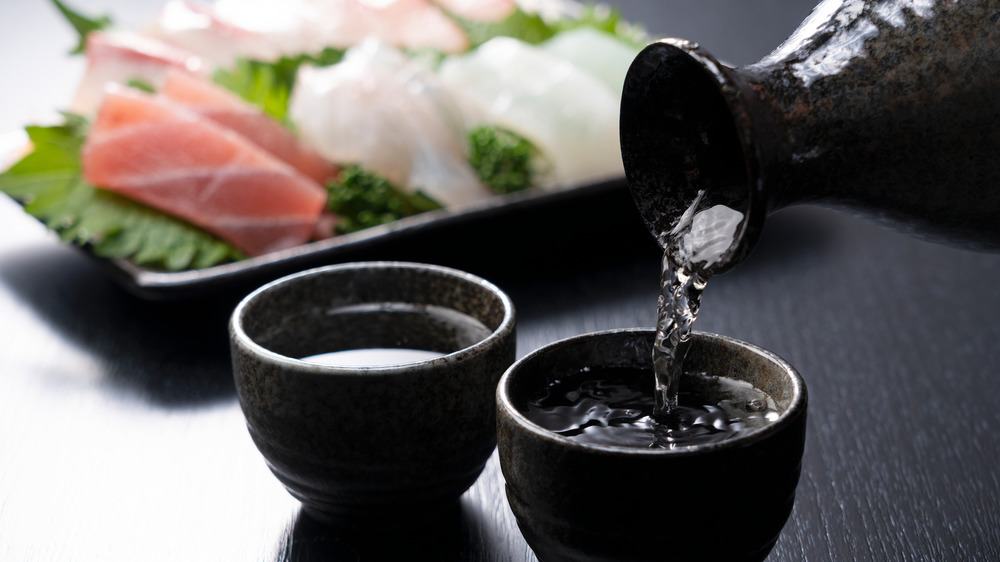The Surprising Way Sake Affects The Taste Of Seafood
As the enchantments of Japanese cuisine spread across the globe, it's safe to say that so did the popular Japanese alcoholic beverage made of fermented rice that we've all come to love — sake. If you're one of the many sake drinkers who likes to pair the drink with a tasty sushi roll, you might want to notice how the sake might be influencing the way your favorite rolls taste, or for that matter, fish in general, according to FoodBeast. While this might not be something you stop to think about prior to taking a sip of the clear, slightly sweet drink, it is something you should consider the next time you decide to order a sake bomb at an all-you-can-eat-sushi night.
Granted, sake comes in many different types and flavors, but one thing they all have in common is the way they interact with seafood when it comes to umami flavors. Not sure what umami is? It's one of the five basic tastes: sweet, salty, sour, bitter, and umami (via Vox), and it can be found in foods such as cheese, meat, tomatoes, mushrooms, and yes, you guessed it, seafood (via Umami Information Center).
How exactly does it alter the taste of fish?
Well, to put it in the simplest terms, sake contains a glutamic acid compound that interacts with the umami inosinic acid compound found in seafood. But when the two react on our taste buds, the results are a burst of flavor due to the amplified umami taste.
According to AISSY Inc., when it comes to alcoholic beverages, sake does a much better job of enhancing the taste of umami in our mouths than other notable alcoholic beverages like white wine, which is also known to increase umami and is a popular drink to pair with seafood.
So, next time you decide to order a bottle of sake, try a simple taste test so you can see firsthand how impactful this beverage can be. You might be surprised to see a world of flavor flourish as you see the world (or your plate of food) differently when you reach a new level of taste awareness and unlock your palate!

